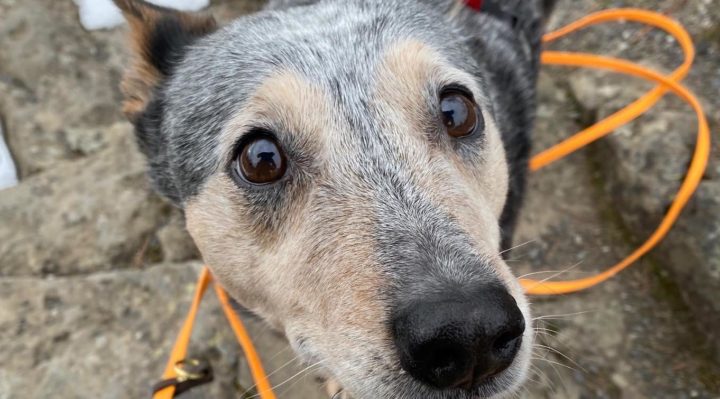

It’s a question that folks who work professionally with dogs hear frequently: “I want to be a dog trainer/instructor. Where do I start?” It might be asked by a child; it’s certainly asked by adults, too.
What advice do professionals who work with dogs give when someone asks where to start to learn about dogs and dog training? I referred this question online to dog professionals from around the world. Here are their suggestions.
Paul Shelbourne (Australia) By learning to train people.
Danielle Shelbourne (Australia) Ask them if they love people! No point just loving dogs when 99% of our work is with humans.
Lynn Brezina (Illinois) My first question would be, “Do you like people?” If the answer is, “No!” or, “I prefer animals,” I would suggest that pet dog training might not be the right field, since a human is always at the other end of the leash—and it is the human for whom they will be solving problems and developing a relationship. Then I would find out what they think they really want to do.
If the answer is, “Yes, I like people,” then I would take them under my wing and, in addition, encourage them to seek an academic program that teaches canid ethology, canine evolution, canine development, canine behavior (both normal and abnormal), and then training methods. If they don’t know what a dog is or how a dog develops, they can’t really train a dog, I don’t care what methods they use.

Photo by Dakota Eckenroth
Christine Hale Vertucci (Illinois) Volunteer at a shelter and get your hands on as many different breed types, sizes, etc., as possible.
Claudia Black-Kalinsky (Georgia) Volunteer at your local shelter. You will gain a lot of experience with many different kinds of dogs, and you will find out if your personality finds the challenges exciting, or just anxiety producing. Also, ask yourself honestly, even if you like working with dogs, do you want to work with their people, too?
Alisha Ardiana (California) When I became interested in dog training, I started with entry-level jobs at the San Francisco SPCA and a positive-reinforcement puppy day school (SF Puppy Prep) to get hands-on dog experience. As soon as I realized this was my path, I enrolled at the Dog Training Internship Academy. This was a six-month in-person positive-reinforcement program. I have done all my continuing education through the Fenzi Dog Sports Academy. It also helps to volunteer at in-person dog-training classes. I was a 20-year vet tech who changed to dog training in 2014. I now am a full-time dog trainer, I walk reactive dogs, and I teach classes to the public. To get paid experience, I recommend dog walking and working in facilities that use positive reinforcement.
Jessica Theisen de Gonzalez (New York) My decision to study dog training was based on years of volunteering at a large municipal open-admission shelter (Animal Care Centers of NYC). I had many assignments (corporate group dog handler, dog walker, mentor) but the one that really gave me the final push was ‘photo and bio writing volunteer’ because we saw every dog that was cleared to handle. And I could ask to observe behavior-team staff interacting with dogs to at least get some info on those dogs, particularly if they were handled by staff only. Being in the exercise pen and seeing the surrendered dogs with behavior issues made me realize I could impact a lot of dogs in little ways and help them acquire skills that could improve adoptability. It was the homeless dog population of New York City that helped me find a career path. So my suggestion is volunteer with a shelter—the bigger, the better. You’ll see a variety of breeds and temperaments and get a nonpareil dog-handling skill set, as well as do some real good in the community by walking and socializing shelter dogs.
April Shoe (Alabama) In my experience, the best place to start is with a really good mentor. For me personally, that is someone who holds accreditations and continues their education every year. Finding a CCPDT-certified [Certification Council for Professional Dog Trainers] trainer in the area checks off my list because the CCPDT requires continuing education. From there, once you’ve reached out and established a relationship, you can discuss an apprenticeship or internship with that trainer/company. Going it alone—which is how my training career started—definitely inhibits your ability to reach your full potential . . . not to mention, it’s quite lonely. If I could go back in time, I would have started with a great mentor first and foremost.
You also need to have good people skills in order to be a dog trainer. If people aren’t your thing, neither is dog training. The ability to determine the individual learning styles of your clients, one on one, absolutely affects your teaching abilities to help them. It is one of the most important skills you’ll need, in my opinion.
Colette Kase (Mexico) I trained a lot of dog trainers who went on to have successful careers. Read up on dog training and find a philosophy and style you feel comfortable with. Hopefully it will be science based, humane, and positive.
Start by finding a dog-training school/class that suits your preferred style of training. You may have to mop the floor, pick up poops, hand out treats, and take registrations for a year before they’ll let you touch a dog. Maybe longer. Use this time to observe, learn, and ask questions. I provided regular workshops for all of my assistants and every class was followed by a Q&A for them.
Attend conferences and workshops. Network with people you admire and ask their advice. Take their advice about what path of education to follow depending on your specific area of interest. (Dog training is a huge field, so someone interested in working with assistance dogs may take a different path than someone who is interested in ring sport, although there should be a great deal of overlap.)
Find a professional association that requires you to meet minimum standards and hopefully involves assessment. Talk to your mentors and ask whether you’re ready to start training independently. Make sure that you appreciate your mentors, so you have people to support and encourage you when you are unsure—because there will always be situations where you’ll need to learn more.
Keep learning. Always. Keep studying. Always. Set professional boundaries. Practice good time management. Make time for self care.
Jacqueline Earnshaw (California) CPDT-KA (Certified Professional Dog Trainer–Knowledge Assessed) is the first certification from the Certification Council for Professional Dog Trainers, an independent certification body. To qualify for the title, you need to take a written test of your knowledge of science-based dog training and submit written affirmations of your ability to train not only dogs but people, too, from a veterinarian and other dog trainers. To maintain your certification, you must submit CEUs, continuing education units. Yes, there are different ways to train dogs, but you might also look at the IAABC, the International Association of Animal Behavior Counselors.
In my opinion, volunteering at a shelter can be an excellent idea . . . or not. It depends. Who would guide you? Would you be taught how to read dog body language? Would you be taught the science behind learning?
Denise O’Moore (Ireland) Certainly encourage anyone thinking about it to volunteer at a local shelter first. Then if still interested look into some basic courses and work their way up from that. Absorb as much information as possible from other trainers and never be afraid to ask questions. In fact, question everything! Just make sure any course that is chosen is up to date with modern methods and welfare priorities, and that the ethics are in line with yours.
Amy Suggars (Ohio) Although education is important, I think experience is more valuable to a dog trainer. The first place to start is by training your own dogs for a variety of activities. That way you can learn how a dog may respond in different situations. Another thing an aspiring trainer can do is volunteer to be an assistant at the local dog-training club. Assist in group classes under an experienced trainer. Many dog-training clubs offer courses for people who would like to become lead instructors at the club. Take this class and teach at your own club before hanging out a shingle. A trainee can supplement their hands-on experience with education from a reputable trainer (like Karen Pryor). In addition to dog-training skills, a successful professional dog trainer needs to develop excellent people skills. A lot of “professional dog training” is more about training the owner on how to interact with and train their own dog. There is much more to dog training than just learning how to click and treat or make funny noises (à la Cesar Millan) when a dog misbehaves.
Melissa McCue-McGrath (Massachusetts) Practice—and practice often—saying “humping” without giggling. Then, and only when you’re ready, picture saying it in front of someone who brought their second-grader to puppy class. Oh, and practice cleaning up pee, poop, vomit that isn’t your dog’s. There are so many bodily functions dog trainers have to clean up every day and we don’t even bat an eye. When interns start with me, they either bail once they realize how much urine they have to clean up, or they stick through. It’s weirdly the best litmus test. That and the humping . . .
Monique Smith (Washington) Dog trainers/instructors are not professions that are regulated. Just because you made your personal dog sit and passed a CGC, volunteered at a shelter, worked at a doggy day care/kennel, or helped a trainer, that absolutely does not make you a trainer of any sorts. It takes years of classroom and practical experience before you can even begin to call yourself a trainer or instructor. Training is more about working with the owners than it is [working with] the dogs. Dogs are some of the most intelligent species around . . . if humans would get out of their way. If you are interested in becoming a dog trainer as a profession, go to school to learn how to work with people; take psychology, neurobiology, canine anatomy, zoology. The best college in my opinion is Carroll College in Montana! Study the canine brain and how they think and process. Then start working with dogs. If you don’t understand how they think, you can’t teach them.
Frania Shelley-Grielen (New York) Formal education from an accredited institution. To quote the guru of modern-day dog training Ian Dunbar, from the Fall 2018 APDT [Association of Professional Dog Trainers] Chronicle of the Dog: “A way for dog trainers to take control of their destiny is to establish a standard level of education. They need a degree-level course that is more practical than any other type of training course offered and everyone has to have it.” There are several organizations and even individuals who offer dog-training education, but Dunbar advocates for a university-level degree that could be taught at community colleges. Agreed. And, I would add, that needs to be followed by applied internships with mentors qualified at the university level.
Helen St. Pierre (New Hampshire) It’s not a profession for the faint of heart, and it will test you in every way, shape, and form. It’s physically demanding, emotionally draining, and not exactly a hugely profitable career financially (I know that varies). You have to be willing to switch gears all the time, stay level-headed in even the most high-pressure situations, and have a thick skin while still maintaining empathy and compassion all the time. Dog behavior problems today are SKYROCKETING, and burnout is very, very real. I think it’s SUPER important for people to go into this with their eyes open—if you’re a good dog trainer nowadays, you’ll do a lot less dog training and a lot more mediating and human training.
Is Your Child Interested In Dogs And Training?
If you’re a parent or guardian of a child who wants to learn more about dogs and training, do your due-diligence: check carefully on any organization or business at which your child could volunteer.
Ask about safety and supervision. Observe and meet the staffers and other volunteers who’d be working with your child. Talk, if you can, with other families whose kids have volunteered there. Consider what your child would be doing as a volunteer “on the job” and what your child would be learning . . . and from whom?
Make the best choice for your child.
Are You Interested in Dogs And Training?
If you’re an adult looking for experience with dogs, consider putting as much effort into checking out volunteer opportunities and the organizations that offer them as you would if your child wanted to “work” there. Visit, now that many shelters and rescues are open for business again. Observe, observe, observe—watch the animals and watch the people, the staff, and other volunteers. Are you comfortable with what you’re seeing? Do you feel safe there? What jobs are volunteers doing, with what guidance from the staff? What training is available for volunteers before day one “on the job”? Who is doing the training and supervision of volunteers; what is that person’s experience and education? What is that person’s attitude?
If you’re looking for experience with dogs and training by taking your own dog to classes at a training club or private business, or offered through your city, due-diligence is again mandatory. You want a good class taught by a good instructor, but when it’s your first class, you have absolutely no idea what a “good” instructor is—and suddenly, there you are, stuck. Before you sign up for a training class? Observe, observe, observe. Take the time to watch classes taught by all of the instructors you might consider taking instruction from, then decide.
Make the best choice for your dog and for yourself.
Steven Cogswell recently wrote about where he started and how he learned about dogs and training. It’s his first blog on the website of his new dog training business in Colorado.
Why Am I A Positive Dog Trainer?
Steven Cogswell
Nicole Wilde, author and canine behavior specialist, has written (and regularly updated) a book meant for anyone who wants to be a dog trainer. “This step-by-step guide contains invaluable resources for the aspiring or established professional dog trainer. It’s like having an experienced professional who also happens to be a friend give you the real scoop on what it’s like to be a trainer, everything you should consider (and what to watch out for!), step-by-step instructions on setting up your business, and much more!”
So You Want To Be A Dog Trainer?
Nicole Wilde



